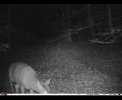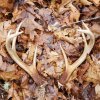- Joined
- Jan 5, 2021
- Messages
- 2,168
I’ve been observing lots of bucks already without antlers in southern New England. It seems like this is the second year in a row that this has happened. Last year the conditions were potentially stressful and could explain the drop. But I’m curious about why this is happening here again. I wonder if any of you are having similar observations in the regions where you hunt?




